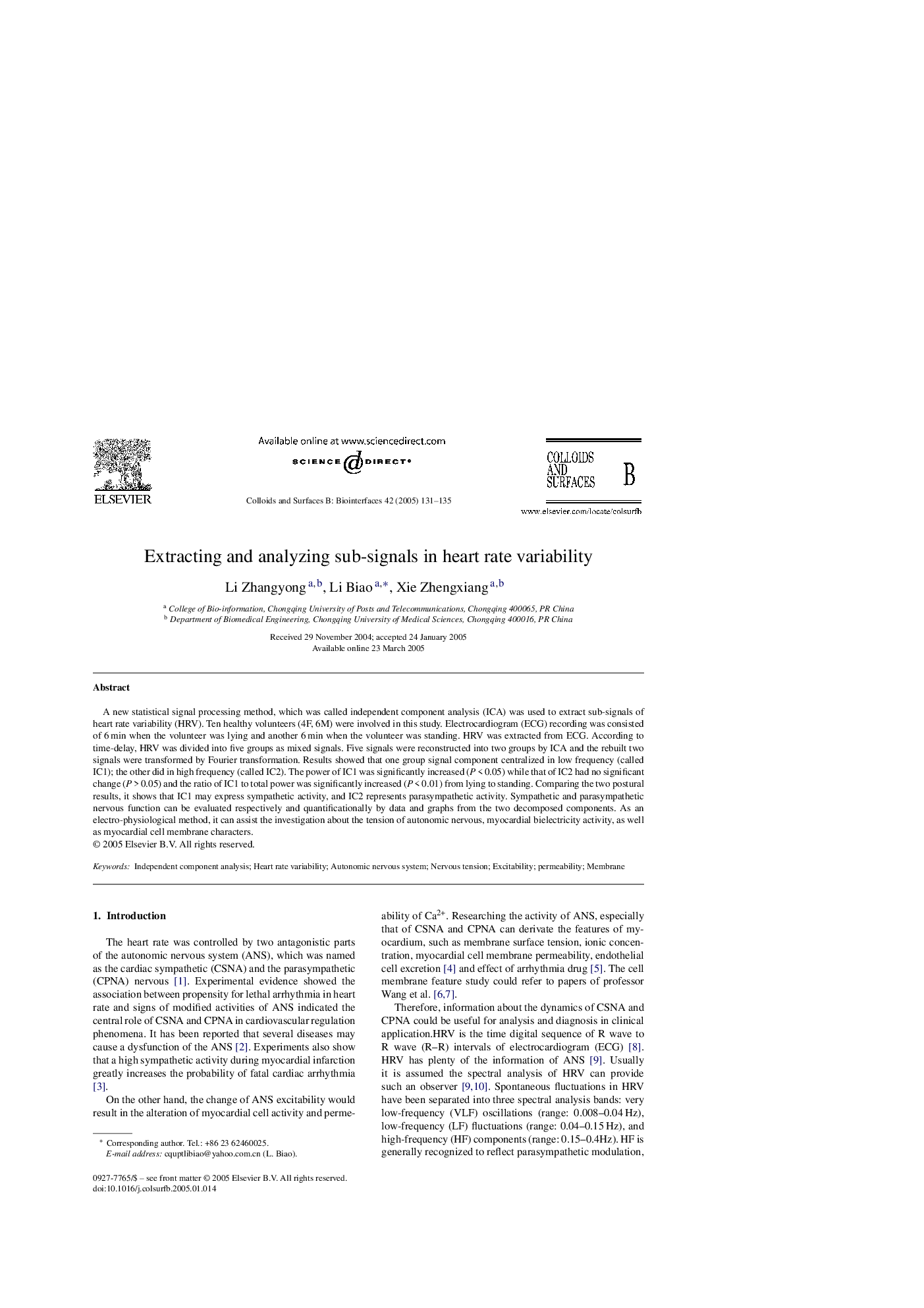| Article ID | Journal | Published Year | Pages | File Type |
|---|---|---|---|---|
| 10374939 | Colloids and Surfaces B: Biointerfaces | 2005 | 5 Pages |
Abstract
A new statistical signal processing method, which was called independent component analysis (ICA) was used to extract sub-signals of heart rate variability (HRV). Ten healthy volunteers (4F, 6M) were involved in this study. Electrocardiogram (ECG) recording was consisted of 6Â min when the volunteer was lying and another 6Â min when the volunteer was standing. HRV was extracted from ECG. According to time-delay, HRV was divided into five groups as mixed signals. Five signals were reconstructed into two groups by ICA and the rebuilt two signals were transformed by Fourier transformation. Results showed that one group signal component centralized in low frequency (called IC1); the other did in high frequency (called IC2). The power of IC1 was significantly increased (PÂ <Â 0.05) while that of IC2 had no significant change (PÂ >Â 0.05) and the ratio of IC1 to total power was significantly increased (PÂ <Â 0.01) from lying to standing. Comparing the two postural results, it shows that IC1 may express sympathetic activity, and IC2 represents parasympathetic activity. Sympathetic and parasympathetic nervous function can be evaluated respectively and quantificationally by data and graphs from the two decomposed components. As an electro-physiological method, it can assist the investigation about the tension of autonomic nervous, myocardial bielectricity activity, as well as myocardial cell membrane characters.
Keywords
Related Topics
Physical Sciences and Engineering
Chemical Engineering
Colloid and Surface Chemistry
Authors
Li Zhangyong, Li Biao, Xie Zhengxiang,
